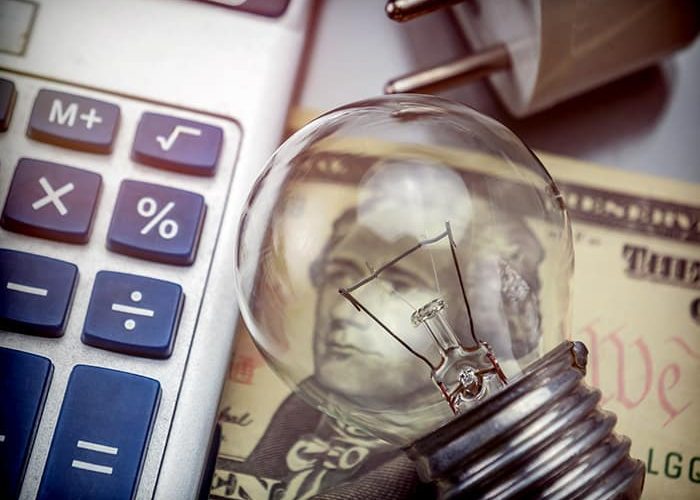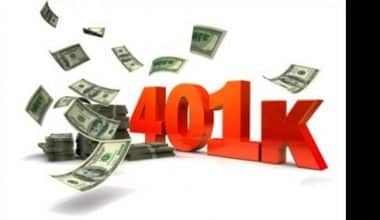When leasing a new car, you may come across a tiny decimal number; what does it represent, and how does it affect your monthly payments?
The money factor is an important but frequently forgotten concept to understand in a car lease.
Everything you need to know about the money factor and how to calculate it on leasing is right here.
What is Money Factor?
For a better understanding, the money factor represents the interest you would pay on a lease and can be transformed into an annual percentage rate. It is used to calculate finance charges on a lease with monthly installments.
It is often known as the “lease fee” or “lease factor,” which is determined by the customer’s credit score. The cost of borrowing is another way to think about the money component. It is simply the return on the lease that the lessor expects from the lessee.
How do we use the Money Factor?
When a person rents a car, they must pay for the depreciation of the vehicle during the lease term. So, taxes, interest, and depreciation are all included in monthly leasing payments.
The money factor is used to calculate the interest component of monthly lease payments. While this is identical to loan interest, it is expressed differently. The annual percentage rate (APR) for a loan is expressed as a percentage, but the money factor is expressed as a decimal.
Typical Applications
The money factor is most commonly used in a car lease. Taxes, depreciation of the vehicle, and interest are all included in the lease payments. The interest rate is determined by the money factor. The MF on a car lease is mathematically and conceptually very similar to the interest on a monthly mortgage payment; yet, as previously stated, it is quoted unconventionally.
To translate a car leasing money factor into a comprehensible amount, multiply it by 2,400; this yields the APR of the money factor, which is essentially the car lease APR interest rate. When applying for a car lease, displaying a solid credit score lowers the money factor of the lease, lowering monthly leasing payments.
It is believed that the money factor is a gray area in the car leasing market because many clients do not grasp the notion. Customers may not grasp the direct effect on monthly lease payments, or that it is quoted at 1/2400 times an APR.
How to Convert Money Factor to Annual Percentage Rate APR
The money factor is determined by the customer’s credit score. The lesser the money factor on the lease, the higher your credit score.
Converting the money component to an APR is one method of calculating it. To accomplish this, multiply the money factor by 2,400. If you get an interest rate from a car dealer, divide it by 2,400 to get the money factor.
For example, if you are charged a money factor of.003 on a loan, the 7.2 percent figure would be (2,400x.003). So, if the auto dealer charges you a 4.2 percent interest rate, divide it by 2,400 to get the money factor of.00175.
It may be displayed in a more readable style, such as 1.75 instead of.00175. Customers are frequently perplexed by this because it looks to be a low-interest rate. However, don’t be duped by a money factor given as a factor of 1,000. Always ask if the figure you’re provided is the APR or the money factor. If it’s the money factor, convert it to APR so you can read the interest rate plainly.
The lease charge is another approach to compute the money factor. If the dealer charges you a leasing charge, you can compute the money factor using the formula below.
Money Factor = Lease Charge / (CC+RV) * LV
- The lease charge is the sum of the monthly finance fees for the whole lease term.
- CC: The capitalized cost, or the amount you have agreed to pay for the automobile.
- RV: This is the residual value or the value of the car at the end of the lease.
- LT: The lease term stated in months
Example of a Money Factor to APR
Assume the vehicle costs $37,500. The customer and dealer agree on a lease price of $34,000. The lease duration is three years, or 36 months, with a $21,000 residual value. The monthly fees total $5,500.
MF = $5,500/ ($34,000+$21,000) * 36 months
MF = $5,500 /$1,980,000
MF= 0.00278
Multiply the money factor of 0.00278 by 2,400 to get an APR of 6.67 percent.
Can I haggle about the Money Factor?
The amount you pay each month will be influenced by your MF. You should have a money factor that is comparable to, if not lower than, the interest rate on a new car loan.
Always inquire about the financial aspect of a lease. Many dealers do not bring up the subject of money, and buyers may be unsure how to inquire. The MF is frequently not revealed in lease contracts because it is not required by law, unlike an APR interest rate in a loan contract. Inquire ahead of time about the MF that will be used to compute your lease.
After determining the money factor, you can compute the APR and discover that your money factor is quite high. The MF, on the other hand, is determined by your credit score. Hence, the smaller the MF, the better your credit score. As a result, dealers will be quite rigorous on the MF and will be unwilling to negotiate much. Instead of discussing the MF, concentrate on bargaining the whole price of the car.
Intuition Regarding Money Factor
It is critical to have a great credit history to obtain a reduced money factor in a car lease. It can help to reduce monthly loan charges. Furthermore, if the car’s residual value is large, the MF will be reduced.
To avoid being misled, car lease customers should be aware of how the money factor can affect them financially in their leasing, as well as comprehend the quotation convention of the MF.
Ways To Spot a Good Lease
For many customers, determining whether or not a lease is good is as simple as gathering the answers to the following three questions:
- How much money out of pocket is required to get started?
- What are the total monthly payment, taxes, and fees included?
- How many total miles are permitted under this lease?
With this information, you can assess whether you’ve found a good lease or if you need to do additional research.
#1. High Residual Value
The most crucial component in a lease, according to lease experts, is the vehicle’s residual value, which is a projection of what it will be worth at the end of the lease term. This “perceived worth of the car” is determined by either ALG Inc., a lease information provider, or the bank that writes the lease contract. The residual is frequently discussed as a percentage.
The residual value is significant since the smaller the payment, the larger the percentage. Try searching for “vehicles with the best residual value” on your favorite search engine for a quick overview. Be warned: In order to figure out a lease at home, you’ll need a lot of information from the dealership.
#2. Low Money Factor
The money factor in leasing is essentially the interest rate you’ll pay during your lease. Money factors differ from their annual percentage rate (APR) cousins, which are commonly stated as 0.00125. However, as with their APR cousins, the lower the figure, the cheaper the interest you pay.
If you are dissatisfied with the MF offered to you, you may be able to negotiate a lower figure. However, it should be noted that in some circumstances, the money factor is fixed and cannot be changed by the dealership. If you find yourself in this situation, ask the dealership if the lease can be completed with a bank that has a lesser MF.
#3. Low fees
If you want to improve the dealership’s lease contracts, you might be able to get some costs decreased or removed from the leasing contracts. Fees such as the security deposit, acquisition charge, and disposition fee differ from one lease to the next.
#4. Offers for Customer Retention and Conquest
Another sign of a good lease is that the automaker or dealership providing it is simultaneously offering aggressive rebates or incentives to get you behind the wheel.
Some companies provide considerable discounts to returning consumers in exchange for their loyalty to the brand. These refunds are frequently in the form of “retention” incentives, as the company wants to maintain you as a customer.
Others provide substantial discounts to consumers who already own a vehicle from a competitor brand. They intend to “conquer” clients, luring them away from their present carmaker, by giving a nice bargain.
Other customer appreciation discounts are available for members of the military, recent college graduates, first responders, and others. If you can combine any of these rebates with an existing publicly promoted cash-back rebate, you’ve probably found a solid lease.
Important Takeaways
- The money factor refers to the financing fee that a person will pay on a lease.
- It is comparable to the interest rate paid on a loan, and it is likewise determined by a customer’s credit score.
- It is frequently represented as a very small decimal.
- The corresponding yearly percentage rate is obtained by multiplying the MF by 2,400. (APR).
Money Factor FAQ’s
What is a good money factor?
A lease with a money factor of less than 0.0017 is an excellent value. Anything greater indicates a less favorable offer.
Why is 2400 the money factor?
2400 is the product of 3 consecutive conversions (1/2 * 1/12 * 1/100) to convert from an interest rate to a money factor
Can you negotiate money factor?
If you are dissatisfied with the money factor offered to you, you may be able to negotiate a lower figure. However, it should be noted that in some circumstances, the money factor is fixed and cannot be changed by the dealership.






